Podcast: Play in new window | Download
Show Notes
Today, we talk about how to live in an HOA or municipal zoning area with regulations… without getting busted!
We want to be able to enjoy our low maintenance landscaping without having to work on it all of the time. Here’s how you can have an easy landscape and enjoy it too!
- HOA
- Homeowners association
- Regulate appearance and design of properties
- Municipal codes
- Codes written to regulate property design
- Setback requirements, easements
- How to not have problems
- Maintenance related
- Maintain appearances
- Mow regularly
- Keep weeds at minimum
- Preventative tactics
- Mulch heavily
- Edge lawn
- Established borders
- Design tactics
- Check regs before beginning projects
- Setbacks
- Fencing
- Structures
- Hardscape elements
- Specific plants
- Reduce lawn area
- Establish slow growing lawn
- “no-mow” and low maintenance varieties
- Keep trimmed more frequently
- Design full coverage beds
- Ground covers
- Varied texture and height
- Varied color
- Grouped plantings
- Establish durable hardscapes
- Durable borders and transitions
- Check regs before beginning projects
- Maintenance related
Links for today’s episode:
I’m you’re breaking the rules host Ben
Hale let’s jump in and learn how to have
a healthy beautiful yard with less work
so you can enjoy more time doing what
you love what’s up and welcome to
episode 21 of the easy living yards
podcast thanks for tuning in today guys
I’m so excited you’re here for the
episode 21 that’s right it’s not really
a fancy number I guess but I you know
I’m kind of feeling rad right now or
whatever so I wanted to use my cool 90s
voice but anyway so welcome to episode
today before we get into it we’re gonna
be talking about avoiding problems with
HOAs and local codes how’s that for 90s
radness talking but before we get into
that I just wanted to let you know guys
know if you guys have any questions or
comments or whatever for the show
suggestions for new shows I want to hear
them and you can go over to easy living
yards comm slash pod slash p OD and
that’ll take you right to a the podcast
page and right at the top there’s a
button to ask any questions or leave
comments so so if you want to do that
make sure you gone over and do that and
you could potentially get featured on
the show as well in the future and of
course I have a link in the show notes
for that as well so let’s get into it
for today so with that guys we are
talking today about avoiding problems
with HOAs and local codes and zoning
this is this is not my favorite topic I
will be completely honest with you guys
you know I’m kind of not a rule person
I’m actually a rule breaker I guess and
now with that said you know I think we
can have a lot of beauty in our
landscapes without having to comply to
whatever somebody else’s perception of
beauty is and that’s kind of why I don’t
I don’t love this topic in and actually
I kind of would prefer to live in a
place where I can you know live
my own rules as opposed to somebody
else’s and what they perceive for their
for their property value anyway before I
get off on a tirade really what I want
to talk today about is is how you can
live in an area that has a local zoning
code or local property codes or if you
live in an HOA and and if you’re not
familiar with it that is it means you
probably don’t live in one but also I’ll
explain it later but if you live in an
area where any of these codes or rules
are in place it’s important that we
comply to them and do it in a way that’s
also conducive to our lifestyle and
saving time from our landscape to do the
things that are more important to us so
so whether that’s spending more time
with your family or working towards your
your passions in life or spending habit
having more time to relax from your busy
lifestyle whatever it is we want to
focus our time on that as opposed to
having to do the chores that are
necessary to maintain a landscape
according to somebody else’s perception
and so today is all about understanding
what are these rules and regulations
like how to find them and also how to
make sure we’re designing and
maintaining our landscape to comply with
them but at the same time reduce work as
much as possible so that’s kind of what
today’s show is about in a nutshell
so let’s get into it so first I’ve used
this acronym a couple times the HOA if
you’re not familiar with it first of all
you’re probably lucky because you don’t
live in one I guess you guys hear my
opinion about them but you know if you
live in an HOA I know a lot of people
like it but anyway let’s just talk about
what it is first what it stands for is a
homeowner’s association so it’s
generally speaking it’s a group if you
live in a subdivision or a development
area it’s a group of homeowners that are
on a local board kind of voted into
place by the the homeowners of that
development and so it’s basically a kind
of a smaller level of of self-government
where this board collectively decides
what we
should not do with our landscape across
the whole development too to have
uniformity and to have it look a certain
way and in a lot of times the defense is
that this helps boost property values
for that space and and that may be true
but at the same time it restricts a lot
of what you can do and it also a lot of
times it also creates a lot of
maintenance needs as well so for better
for worse that’s what a homeowner’s
association is and I guess the the short
sentence for it is they regulate the
appearance and design of properties in a
given space so if you happen to live in
an HOA and you’re looking to save time
in your landscape that you have to do it
in a certain way to make sure you’re
compliant with the HOA rules while
allowing yourself the freedom to to
design in compliance to those rules with
the intent to save as much time as
possible for maintaining your landscape
okay so we’ll get into that later
the next piece I want to define is
municipal codes so these are codes
written generally at a city town
township level rarely at the county
level to regulate property design so
these include setback requirements
easements so if you’re not familiar with
what an easement is it’s it’s basically
a space where you’re regulated on what
you can do if one of these easements
touches or runs through your property so
a certain Eva’s met could be a sewer
easement so if there’s an underground
sewer pipe that runs through your
property or a waterway easement if
there’s drainage space across your
property it could be a road easement so
if you you know you the street your
property butts up to you might be
regulated on a certain amount of space
that you have to keep open for whatever
reason so these are various examples and
and not not encompassing for sure but
those are examples of what types of
easements you may have that are
regulated through your local Township
likewise you have setback requirements
so you can’t build for example
right on the edge of your property line
in most cases so you have to make sure
you’re compliant with the setback
requirements based on the structure or
the design you’re working with at the
time so various structures require
different levels of setback and so it’s
important to understand those two before
you’re going across or going ahead and
building something with with it being in
the wrong space okay so those are our
general definitions I’m gonna try and be
brief on those today
and let’s just jump into understanding
how to not have problems in the future
and how to minimize as much work as
possible with your landscape so I’m
breaking this kind of into three buckets
for us the first is maintenance related
stuff the second is preventative tactics
you can use to reduce work and the third
of course is designed tactics so more
labor-intensive to install more work to
do but in the long term the design
tactics went out with how much they can
save you so for now what you can do is
you can start switching some of this
maintenance stuff and for a long term
you can start planning for some of this
design stuff so let’s get into it so for
maintenance related stuff we’re kind of
talking about three primary things I
want to point out for maintenance
related stuff first this is about
maintaining appearances so you want to
make sure that your property doesn’t
stick out compared to your neighbors
properties or the properties in your
neighborhood where you’re going to be
catching the the oversight of somebody
or be targeted for some violations so
essentially what you need to do is you
need to make sure you’re maintaining
your property at a frequent enough basis
to not look you know unkempt and and so
these a lot of these codes will have
certain guidelines I guess of what you
can do so for example how much you need
– how short your nons
nan needs to be trimmed or whether or
not it can have the appearance of any
clover in it for example or any other
broadleaf plant
so depending upon where you live the
regulations for this may be more or less
stringent and and so I’m not being
specific here because it highly varies
based on where you live so it’s
important to actually even though it’s
kind of a bear to read through some of
this stuff it’s important to read
through it to understand what are your
limitations and and kind of where do you
have some leeway but in general what I’m
saying here is make sure you’re kind of
maintaining appearances so you’re not
getting more scrutiny than say your
neighbor might be because of just a
perception so the next piece is to mow
regular regularly okay
a lot of what I’ve talked about in
previous episodes is to mow less often
right and and that’s true I still
recommend you do that but to make sure
your mowing regularly enough to again
not bring scrutiny upon your landscape
and and so I’ve talked in other episodes
about how to maintain your lawn to be
more low-maintenance and one of the
guidelines I’ve given or recommendations
that giving is to mow higher because it
helps the overall health of your lawn
I’m not going to get into it to detail
today but you can check out the previous
episodes about lawns if you want to to
understand more about that so for for
mowing I still recommend you mow higher
but you may not be able to mow as high
as somebody that’s you know not in one
of these more regulated areas because
again you you’re trying to avoid
scrutiny here you’re trying to avoid the
the I guess the the heavy fist of of
wall coming down to focus on your
landscape as opposed to your neighbors
just because of one thing that may you
know trigger somebody to to think more
about your yard as opposed to your
neighbors and so if you’re mowing too
high you know even when it’s freshly
mowed it still stands out in contrast
your neighbors and so I still recommend
you you mow as high as you feel
comfortable with to increase the health
of your lawn to reduce weed issues to
increase the resilience of your lawn in
drought conditions and so on and so
forth without mowing so high that that
it’s going to cause you some some issues
in the long term just with where you
live and the regulations you have
so mowing regularly enough to where
where your mow your excuse me your lawn
looks consistent enough so this means
you might have to most slightly more
frequently than than what I’ve
recommended for other places but this is
again a judgment call but if you’re you
know if you’re you’d lawn is taller it
doesn’t necessarily mean it looks kind
of scrappy so if you’re mowing higher
than your neighbor’s lawn it you’re
still gonna have those nice even cut
grass blades that people love to see and
when it starts to you know kind of grow
to where it’s not incredibly even as
when you know it might be an indicator
that it’s time to mow and so you might
only be mowing a very small portion of
the grass blades off at that point but
but it’s enough to keep up appearances
and and yes this is more work than if
you live somewhere else but the option
of course is to to move and and I’m
guessing you would rather not do that so
so I’m trying to give you
recommendations here to to live as much
in harmony with your neighborhood
without having to move so whether or not
you should move is another story that’s
a decision I’m gonna leave up to you but
um let’s let’s assume for this case that
you you would like to stay in your
current home okay all right so we talked
about maintaining appearances and that
being kind of the goal mulch eight or
excuse me I’m skipping ahead here mowing
regularly and the last thing is to keep
weeds at a minimum so I’ve talked about
the lawn already at so this goes for
both your lawn and your garden beds so
keeping weeds at a minimum is again
going to avoid you having extra scrutiny
placed upon your yard because a lot of
these codes and regulations they’re
written kind of vaguely and it’s kind of
written in a way where it’s a little bit
of judgment on the the regulating
official there’s a little bit of leeway
and so if a yard looks potentially
unkempt or not as attractive in in you
know and some people’s perception you
can become you can come under scrutiny
or be issued violations or fined based
on appearance and again this is kind of
a qualitative things sometimes but
but of course weeds play into that so if
somebody thinks that your garden bed
looks a little rough or whatever you
might come under scrutiny for that
because there’s a few weeds popping out
so it’s important to make sure you keep
weeds at a minimum in order to avoid
this avoid this scrutiny okay so that’s
the maintenance stuff you know how I
feel about maintenance if you’ve
listened to the any other episodes and
and if you’re you’re new to the show
first of all welcome as usual I’m so
excited you’re here and this is a bit of
a tough episode to come onto is the
first time but but maybe you’re coming
here because you are having issues or
you’re trying to understand more about
these regulations so if so thank you so
much for coming by and yeah I think
overall the message is that we want to
try and reduce maintenance as much as
possible but but if are if we’re
required to do certain things it’s
important we do it to the frequency or
to the to the level where we’re not
going to be coming under additional
stress because of somebody else’s
regulations on our property
okay so let’s move on into some
preventative tactics we can do with our
current landscape without having to
redesign it so this is very helpful for
kind of making some small changes that
we don’t need to go over drastic majors
yet so as far as preventative tactics I
have three major things we can do the
first and you’ve heard me say this
before is to mulch heavily so heavy
mulching can go a long way to and of
course this is in your garden beds this
can go a long way to reducing weed
problems while increasing moisture
retention in your space and also over
the long term increasing the fertility
of your soil so mulch has a lot of
benefits and and here I’m talking about
natural wood mulch you can also do say
like pine mulch like pine needle mulch
or even bark mulch pine bark is a common
one a lot of these natural materials is
what I’m talking about
and and this stuff is really helpful at
weed suppression assuming you have a
thick enough layer
it’s also helpful at those other things
I talked about now in order to get these
benefits of mulch you have to be several
inches thick the recommendations vary
here but I would suggest at least four
inches of mulch to be maintained on your
your garden beds in order to really get
the benefit of weed suppression and the
moisture retention and and so on
now with mulch – of course I’ve said
this in the past but just to reiterate
here I recommend you get is the the most
natural mulch possible so try and avoid
the ones that have dyes in them make
sure you know the source of the wood
mulch as well so if you’re getting them
from a big-box store especially this is
something you have to be careful of or
even a landscape supplier the dyed mulch
is a lot of times they’re lower quality
wood from all sorts of sources and the
the dyes themselves aren’t great for
your soil for your plants likewise a lot
of times these mulches these commercial
mulches are sourced from things that
aren’t the healthiest source of wood so
they might be ground-up wood pallets for
example and and so a lot of those things
have chemicals in them that reduce decay
for the pallet but when it comes to the
mulch that being in contact with the
soil and your plants can really
negatively affect your garden bed and it
can actually cause problems for your
plants so you want to get the most
natural mulch possible so hopefully it’s
just ground up pieces of wood or you
know your pine needle mulch is a
different story where it’s it’s pretty
good stuff and so just make sure your
source of mulch is healthy for your
landscape the next piece is edging your
lawn so this actually can be helpful
this is something I need to do for our
lawn right now actually – so when you
come up to a border especially like a
sidewalk or a driveway make sure you put
in a good edge there so you know I’m
talking about you know you see the guys
with the weed trimmers and the
landscaping company kind of going down
and cutting an edge there we can
actually take a spade every this is
something you’ll have to do every few
seasons but take a spade and actually
cut a chunk of the soil away from the
edge
to give it a little bit of a gap and and
this prevents the overgrowth of your
lawn into the hardscape element which
which appears very unsightly to a lot of
people and so by establishing this edge
you you again are reducing the amount of
catching somebody’s eye that might
dislike what you’re doing with your
property the next piece is to have
established border so this is kind of
the part and parcel with the previous
example of edging your lawn but here I’m
talking about defined transitions
between one type of space to another so
this is between a garden bed in your
lawn or a walk or pathway in your lawn
for example and so having a good border
there a durable border will reduce a lot
of creep one way or the other with your
types of plantings and it’ll reduce a
lot of weed problems as well so
something to consider there a lot of
very various options for durable borders
and just pick something that appeals to
your style and also the amount of work
you’re willing to put in to establish it
and the duration of time you want the
border to be effective okay so those are
three examples of preventative tactics
you can use to reduce maintenance and
also kind of increase a little bit of
curb appeal at the same time so I
strongly recommend those now let’s
transition into some design tactics you
can do with your landscape so this is
longer term play stuff but changing
these these design elements can really
go a long way to one increasing curb
appeal but at the same time making sure
you’re compliant with local regulations
and so that’s very important too of
course to be compliant with either the
HOA or the local municipal regulations
so that’s a great segue into my first
point which is make sure when you’re
beginning a project you thoroughly check
what regulations you need to comply with
so if you live in an HOA for example you
need to make sure you’re checking the
HOA regulations also checking the local
municipal regulations and even the
county regulations for
a lot of times County only comes into
play if you have to consult building
code and sometimes setback requirements
as well at the county level so just make
sure you’re checking at least to make
sure none of that stuff is necessary and
if this is a kind of a unfamiliar space
with you usually if you call up your
your local municipal property department
they’ll be able to help you and guide
you to understand what you need to
consult before starting your project so
things you want to check before you
start your project setback requirements
if you live in an HOA it might be even
be things like fencing what type of
fencing you’re allowed to use whether or
not a certain part of your yard is
allowed to have it what type of plants
specific plants you’re allowed to use
what type of hard scape elements you’re
allowed to use or what structures you’re
allowed to have so some HOAs don’t allow
you to have a storage shed for example
so make sure you check to see what you
are and are not allowed to have on your
property both at the the HOA level the
local municipal level and then even
grander scale at the county level okay
so once we’ve checked to make sure we
know what we’re allowed to do and what
we’re not allowed to do the first thing
I would suggest is to figure out how you
can reduce your lawn area as much as
possible so putting in larger scale
garden beds that cover more of your
property of varied styles potentially
but you know again a cohesive design
style across your property but that
something that provides visual interest
will go a long way and toward making
your your property look appealing and
attractive while you’re looking unique
but also more importantly being very low
maintenance where you can enjoy that
property you can improve your
relationship with your neighborhood and
you can have more time to do the things
that are more important so that’s what
we want here so the first step is
reducing your lawn area to the bare
minimum so this is the lawn space that
you feel like you want for either view
or recreation or relaxation or
entertainment so
really sit down and think what do I
really want and need for my lawn and
then what should I do with the rest of
the space and this is kind of a tough
thing to do because we’re all used to
having so much lon
but when we really think about it we
probably need a fraction of what we
actually have and what this will do the
reason I’m pushing this or suggesting
this is that a lawn is a very
high-maintenance piece that interrupts
our schedules you know other parts of a
landscape can be high-maintenance but
the thing with a lawn is it requires
repeated work on a frequent basis that
can interrupt our day-to-day life and so
the more we can reduce that the the more
availability we have on a more frequent
basis to do more important stuff so
consider reducing your lawn as much as
you’re comfortable with doing and
replacing with other elements so this
can be again garden beds or hard scape
elements such as a patio or deck or
other entertainment space is a fireplace
that may be just as beautiful and and
just as beneficial for your landscape
and your lifestyle
so next establish consider establishing
a slow-growing lon so there are a lot of
slower growing options out there that
can create a beautiful lawn for you and
of course this is something I’ve
suggested in previous episodes as well
the Nommo lawn that we have from Prairie
nursery ism is an awesome lon it’s a
much slower growing lawn than your
typical lawn around the Midwest and it’s
a such a beautiful and comfortable on at
the same time and so I mow that a very
infrequent basis so we’re talking maybe
two to three times a year and and you
can move if you’re living in a an HOA
you can actually mow it more frequently
and it still does great and it looks you
know more more clean-cut I guess you
could say then what I keep ours at but
and again I only have this one part of
my property I don’t have across the
whole property yet and so this is kind
of a
I put in a few experimental plots just
to you know kind of test this stuff out
but but I loved it and it does require a
little bit of maintenance every couple
years and that’s for a later episode but
but basically consider what options
might fit into your climate for for
lower maintenance lawns and a lot of
these options they’re becoming more
frequently available across different
geographies and make sure you get the
the biggest thing about a lower
maintenance line is it has to be the
right one for your geography so the the
Nommo lawn that I have is only effective
for northern climates or the cooler
climates but not in the warmer southern
climates of the United States it would
be kind of a waste to try and establish
the same varieties of grass that I have
in my lawn down south where it’s too
warm for it so make sure you understand
what options are available for your
space okay and and again for your lawn
keep it trimmed more frequently than
maybe somebody living outside in a
municipal area would do just enough to
to make it look you know neat and
trimmed and kept up well because
especially if you have a different
variety then people are used to it might
stick out a little bit so you got to
make sure you’re clear that I’m
maintaining this space I’m keeping it
you know up to par with with beauty and
and this is what it’s for so and you can
actually do that where you have certain
spaces that are very well-kept so kind
of like think of it like a golf course
right you have your putting green that’s
kept at a very very low height for your
grass blades and then you have your gosh
I don’t now and you have your fairway
which is trimmed a little higher and
then you have your roughage right now
golf courses are considered a beautiful
space but think about they include the
rough areas right and so you can have a
similar design with your space where you
do have certain spaces that are they’re
maintained a bit more frequently you
know a little near trimmed and then you
have your spaces kind of off to the side
that are kind of give it that bit of a
rougher feel and and they can be part of
a beautiful
design and the advantage here is that
it’s also a little bit less work to
maintain okay so now that we have less
lawn with a better variety of grass
that’s less maintenance the next piece
is to design our garden beds and for our
garden beds let’s make sure we’re
designing full coverage beds and we want
to do this of course with the intent of
a low-maintenance garden right so we
want to select the right plant varieties
for this where there are good hardy
plants that are well adapted to our
region we want to make sure we have
adequate ground cover to cover the
garden bed as completely as possible to
reduce any light touching the soil
because that’s when we have weed
problems we want to have varied texture
and height to give it good I appeal good
curb appeal likewise we want varied
color and we want grouped plantings so
these are all design tactics that you
want to make sure you include in order
to really make your your space pop and
really make it look like this is a great
space it’s got a lot of beauty and while
it’s a little bit different based on how
it’s designed it’s designed differently
in a way that’s going to increase my
property value and my neighbor’s
property value because again going back
that’s what a lot of these codes are
written for is the the fear that that
somebody’s landscape being different
will will affect the neighborhood’s
property value so as long as you’re
making a beautiful space you will most
likely be be attracting the the eye of
your neighbors and wondering how you got
what you have instead of putting in
complaints about your space so that’s
what we want to avoid here right okay
so when you’re looking to design your
space I’ve got a lot of content already
if you want to go in deeper you can
check out some of the previous episodes
to really understand more completely
about how to design your space and if
you’re thinking about hiring a designer
one of the we just published an episode
on that as well so check out you know
when to hire a designer if it’s right
for you and make sure you you’re clearly
communicating your expectations with
your designer so they understand what
you’re trying to do with reducing the
amount of work on your landscape while
increasing the beauty at
same time okay so to kind of take us
back on track for the design piece make
sure we’re establishing durable
hardscapes so if we’re considering a
hard scape space like a patio add a
pergola those sort sorts of things
make sure we’re using materials that are
very durable that are going to require a
lot of maintenance and they’re also
going to prevent long-term weed issues
throughout the space as well as along
the edges so let’s make sure we’re
designing it properly to reduce those
maintenance needs and along with that
using durable borders and transitions
will really go a long way to reducing
your long term maintenance needs so I
know that gets pretty deep pretty quick
with the design stuff but what this
stuff will do you know if you if you
were to change your landscape over the
course a lot of times this takes a
couple years right but if we start now
with thinking about our space how we
could change it what we want with our
landscape how it complies to the local
regulations and then kind of tackling
our landscape bit by bit to change it in
a positive way that really gives us so
much back in our life and in enjoyment
as well as time and that’s what we’re
talking about today so if you have if
you’re looking for help that you need
with your landscape if you have specific
design questions you can always reach
out to me and set up a consultation so
you can just jump on over to easy living
yards comm slash consulting and that
will take you right to my consultation
page and of course as usual I have a
link in the show notes likewise you can
check out the previous episodes there’s
a ton of great value in the previous
episodes that you can dig into and to
understand more about how to do this
stuff and with that guys thanks for
tuning in and make sure you live with
passion and make tomorrow better than
today
[Music]


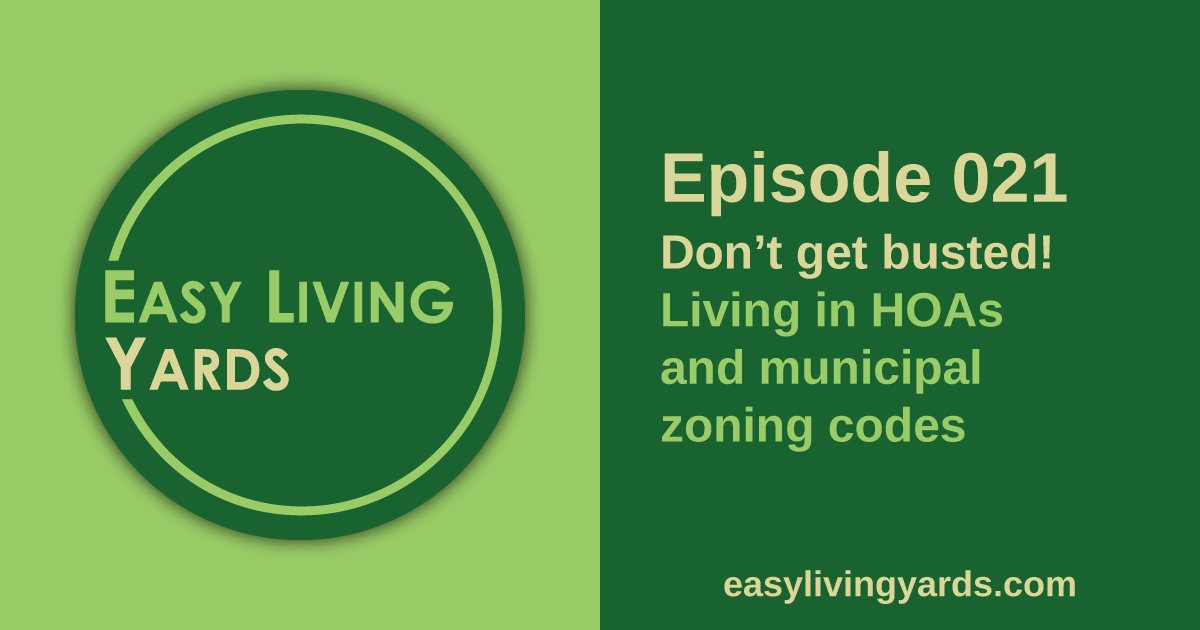
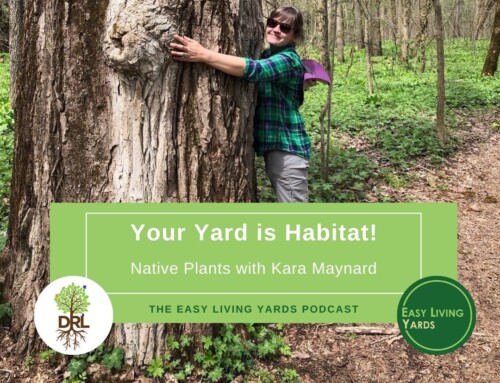

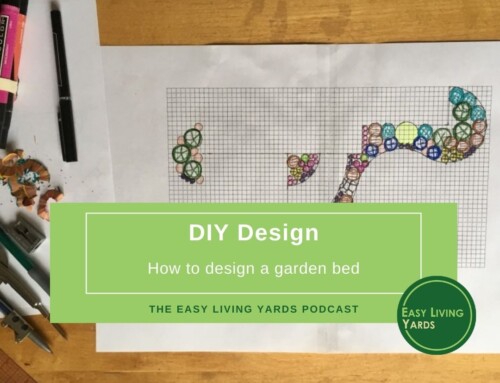

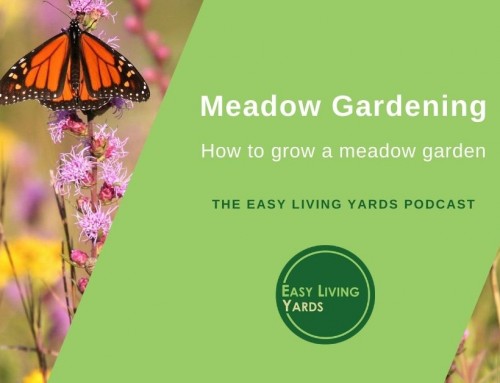
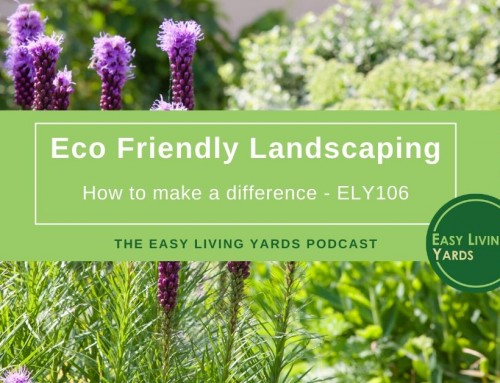
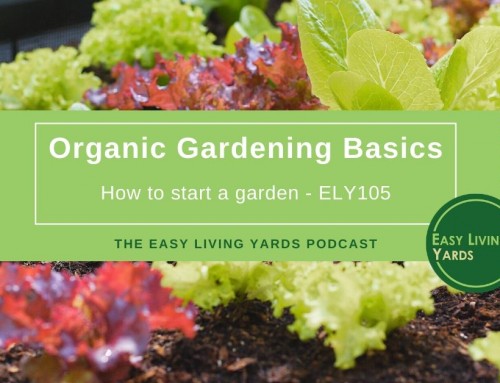
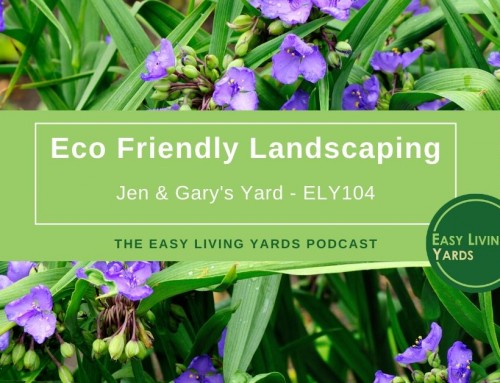
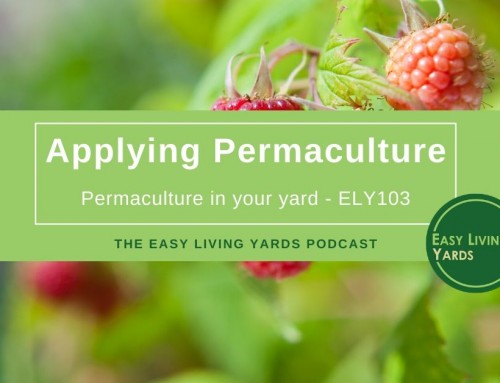
Leave A Comment